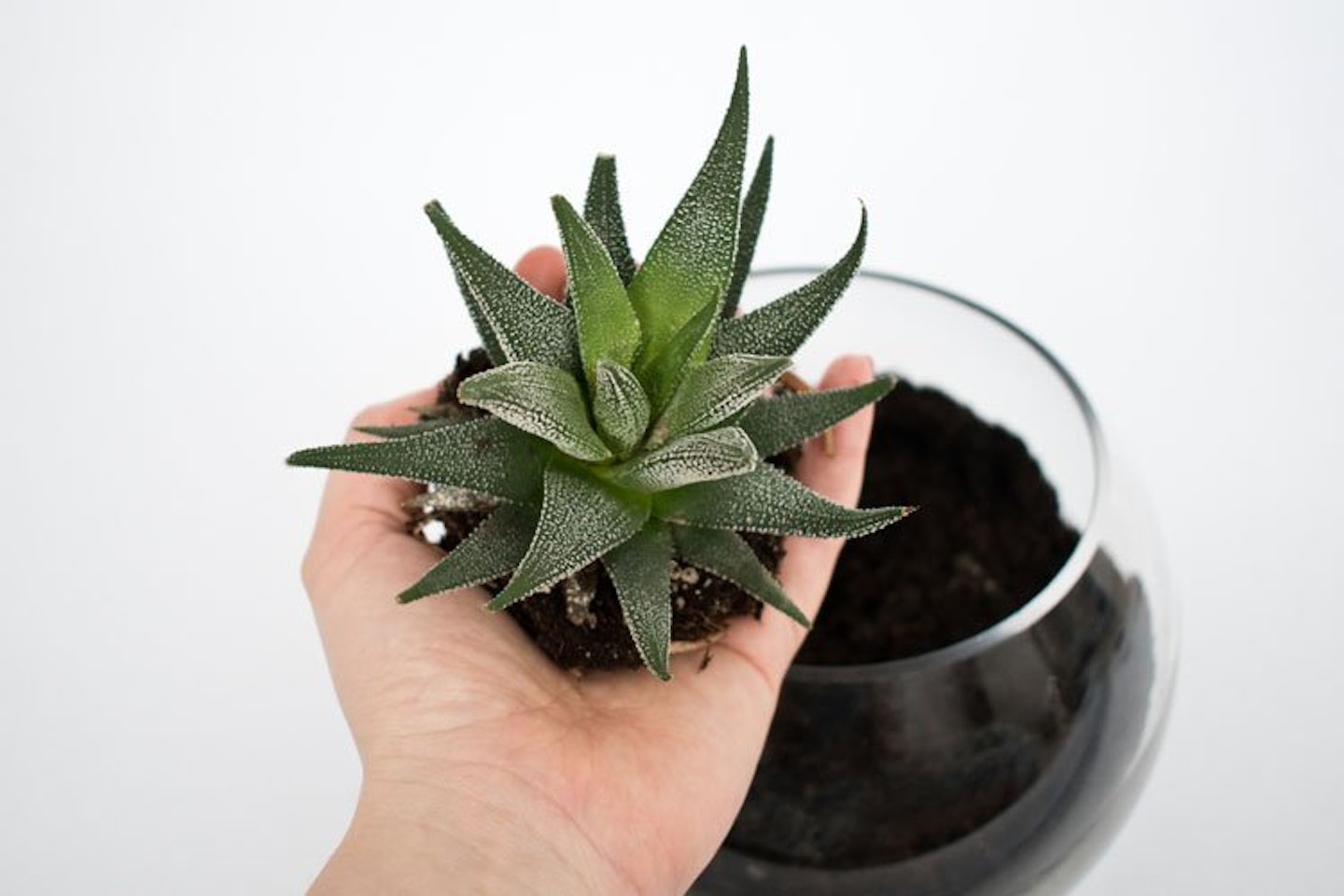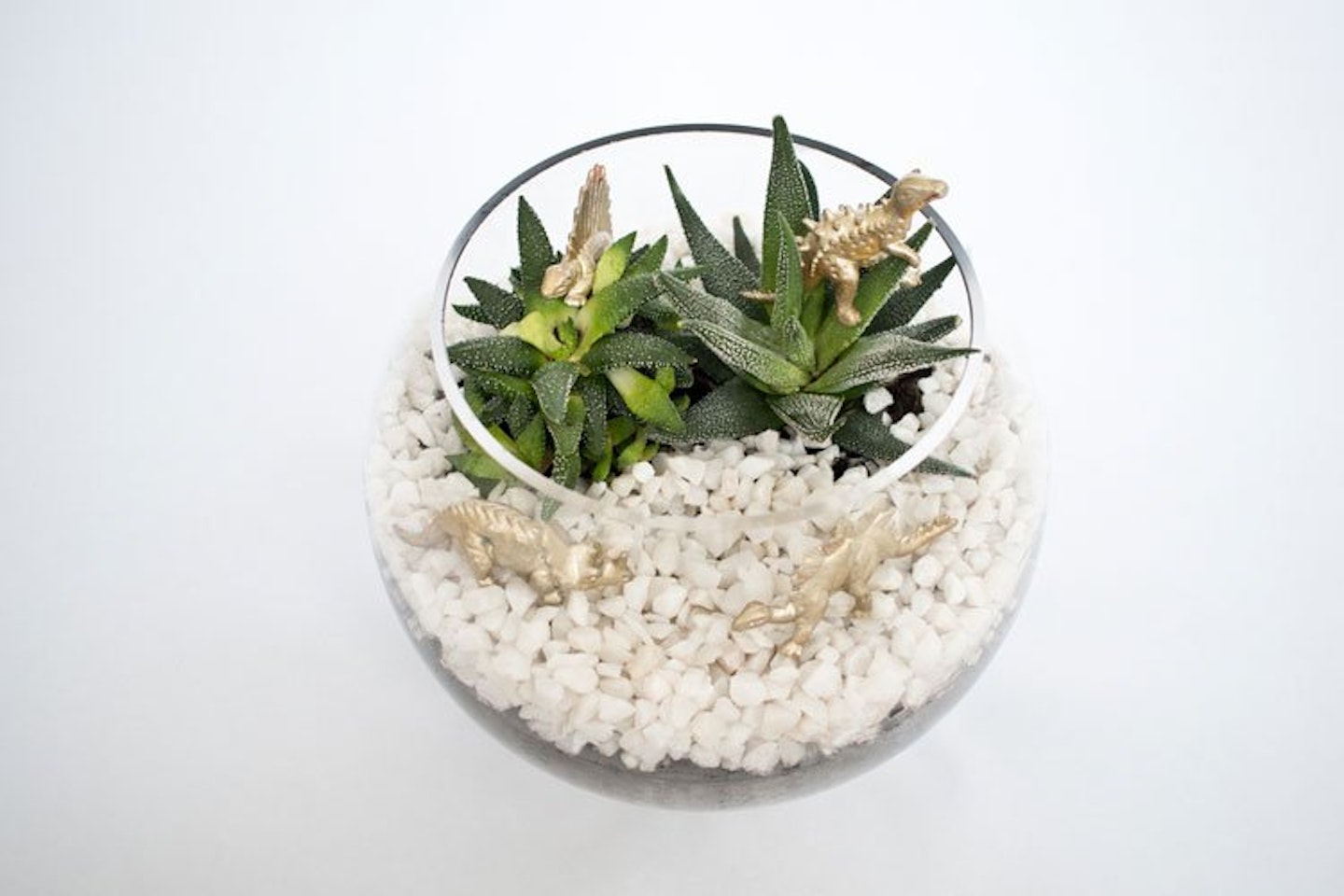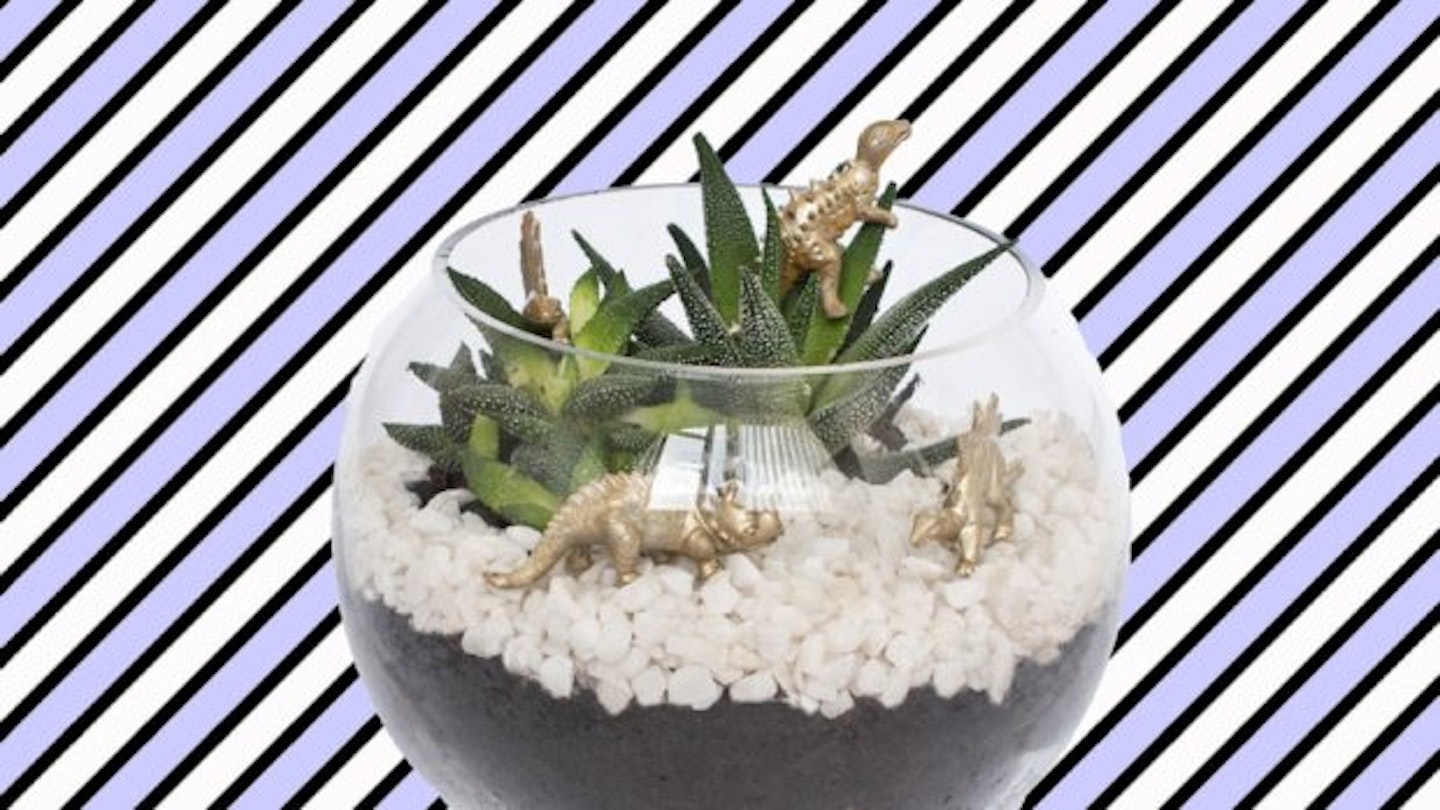Of all of the houseplants out there, terrariums are the hottest interior trend du jour. Whilst there are plenty to buy, they can set you back a pretty penny. For example, we love this from The Urban Botanist, but at nearly £70 it’s definitely a tad out of our pre-(and post-) pay day price range.
That said, if you're as into this indoor greenery trend as we are but can’t keep a plant alive for love nor money, these are for you. Terrariums are super low maintenance as they pretty much tend to themselves. Most succulents only need watering monthly and live for years, unlike that once pretty, very wilted flower pot you brought home a week ago.
WATCH: Nik Southern, Founder of Grace and Thorn, Tells Us How To Look After Our Plants
The good news is that it's so quick and easy to make your own. Introducing the perfect project for that super chilled out weekend you had planned.
Pick your plants

Succulents are generally the best bet for a terrarium. They're easy to look after as they’ve adapted to dry climates. Which basically means that they've learnt to 'fill up' with water in order to survive droughts in the desert. They are, as they say in plant speak ‘drought tolerant’ so you don’t need to worry if you (when you) forget to water them, unlike other plants.
With the cacti trend going strong, there are loads of great plants on the market. Ikea do great plants for the price, like these £3 beauties. You'll probably notice that there are loads of different types on offer at places like Homebase too, and if we're being honest, we made our selection based on how pretty they look but they all work as well as the next in the terrarium. The best thing about making your own rather than buying is you can fit your plants to your jar. If you’re after smaller pieces, we love these miniature babies!
The flowery shape of a Echeveria cacti is certainly the pretty option, these can also flower spontaneously. Aloe Vera, £2.50 at Ikea, also works well. If you’re after more of a leafy look, Mother in Law Tongue is larger but would work well in an upright vase alone, or with other plants, as would smaller Peperomia’s.
What you’ll need
A fishbowl vase. We went for one at Poundworld because, well, £1. But if you want to stretch a bit you can find them for £2 at Asda, or online at BM Stores here and at Poundstretech.
If you’re after more of a jar than a bowl, there are lots of great pieces to buy these on the cheap - there's a £2.50 ‘Ensidig’ jar at Ikea that'll work nicely.
Pebbles for drainage can be purchased on eBay for £1.99. We chose white, but obviously, you can use any colour – there's an incredible pink set that we had our eyes on. The bottom layer of pebbles is really important and a necessity for draining water - we added pebbles to the top for decoration but you can leave with just soil if you prefer.
2 Succulents, £3 Ikea. or you can buy three smaller plants for £4.50.
Soil – we took 5 handfuls of soil from our garden which is totally fine to use as we've got that drainage through the pebbles at the bottom. If you don’t use pebbles though, it’s best to buy specialised soil for succulents. You can get this in supermarkets or garden centres.
Optional (totally worth it) extras
Dinosaur figures - £1 for 12, Poundland). Dinosaurs are having a moment, guys.
You could keep these neon, or spray them gold like ours. Craft spray, £2.50 eBay.
How to make it
-
Make sure your vase is clean before starting.
-
Put four handfuls of pebbles into the bottom of your jar and give it a shake to even out the coverage. Saying this, we love the effect the slightly uneven layers of pebbles and soil give. Your vase size may vary but essentially you want about 2 inches on pebbles for drainage at the bottom.
-
Add five handfuls of soil on top of the pebbles, or up to 3-4 inches deep.
-
Make a hole in the soil with a spoon for your first plant. Remove from its pot and plant.
-
Repeat the above for however many plants you have. When your happy with the arrangement, pat the soil down with your fingers. You might want to use a spoon to get to the edges of the bowl.
-
If desired, spoon the remaining pebbles around your plants. If some fall into the leaves of the cacti (as they inevitably will!) use tweezers or a blunt knife to remove.
-
Give your bowl a shake to even out the pebbles, or pat down with your spoon.
-
We sprayed our £1 dinosaur toys gold on newspaper, left them to dry for an hour, then added four happy creatures to our Jurassic Park inspired world.
And just to prove that the terrarium possibilities really are endless, we made a whole other one in a tall vase because, why not! You'll find some really funky terrariums online, planted in a silver brogue and even an old telephone. Go get inspired. Let your creativity take over…
Looking after your terrarium

As we said, there’s not much maintenance needed. The ‘best’ advice when it comes to watering varies. Some say every two weeks, some say every month. I’ve found the best way to know if your plants need watering is to touch the soil. It should always be damp, not wet or dry. Too much watering can be worse for the plants than too little. You can fill a spray bottle with water to spray the leaves, but this isn’t a necessity.
Your terrarium will be happy at room temperature. To avoid overheating, keep the terrarium in bright but indirect light. It is also a good idea to rotate your bowl say, every few weeks so the plants get even exposure. You can tell if the plant has too much sun by its colour as it'll go white or yellow. If this happens though, just move your terrarium out of direct sunlight. You can also feed the plants with cacti feed (available at larger supermarkets and garden centres) every two or three months.
Like this? You might also be interested in...
7 Pinterest Homeware Trends For Summer 2017 You Can Do On The Cheap
The 8 Inevitable Arguments You Have With Your Housemates About Decor
Follow Jenny on Instagram @jennybrownlees
This article originally appeared on The Debrief.
